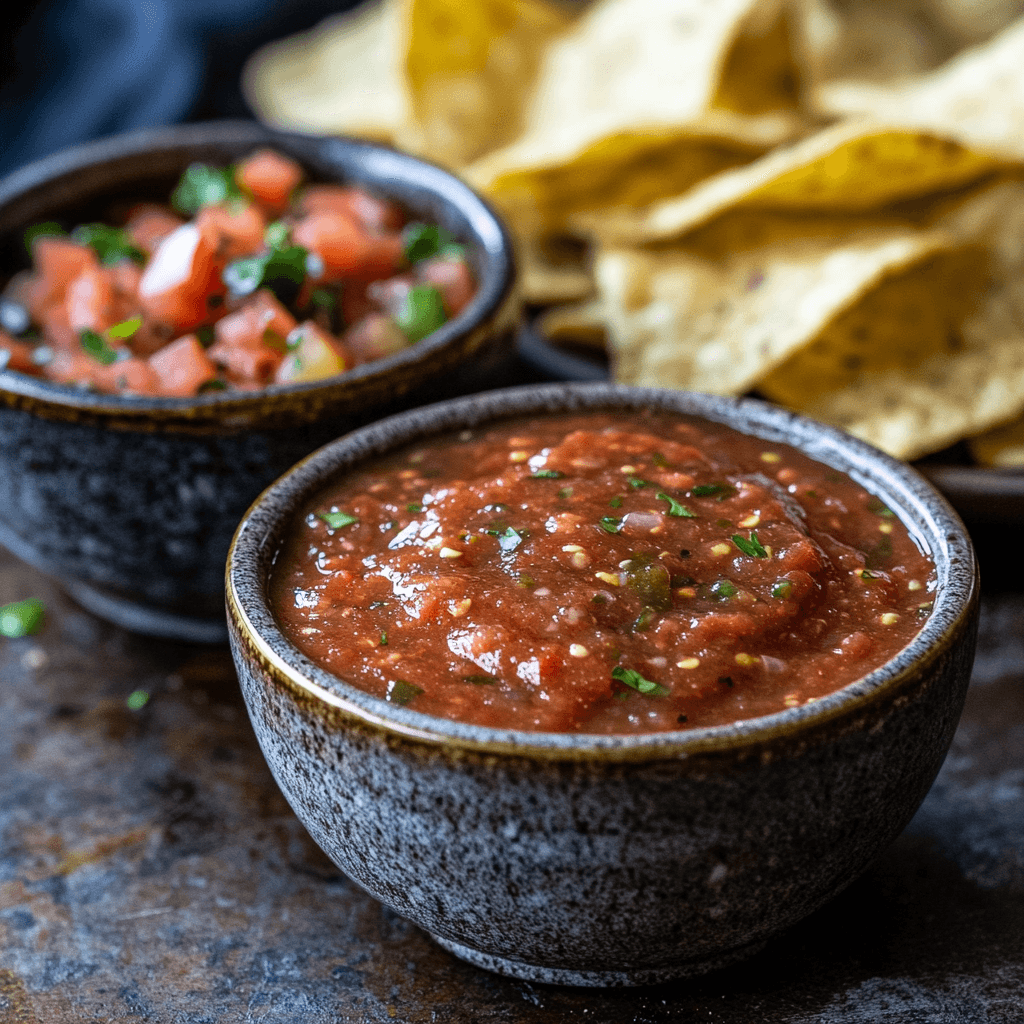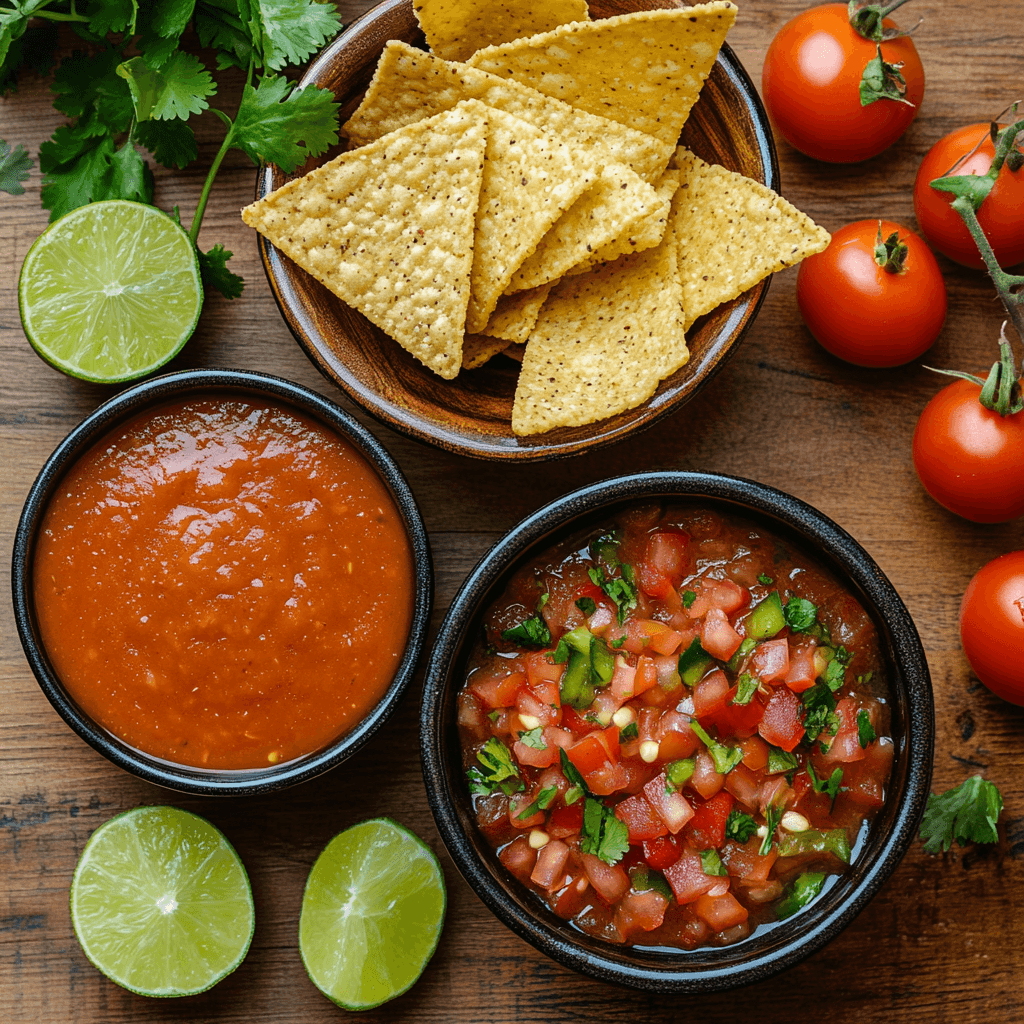Taco sauce is a versatile and flavorful condiment that plays an integral role in enhancing the taste and experience of tacos and other Mexican dishes. With its rich blend of spices, tomatoes, and chili peppers, taco sauce adds a perfect balance of tanginess and spice, elevating even the simplest taco to a mouthwatering delight. This beloved sauce isn’t just a topping; it’s a cultural staple that embodies the bold and vibrant flavors of Mexican cuisine.

Table of Contents
The Role of Taco Sauce in Mexican Cuisine
In Mexican cuisine, this flavorful condiment holds a special place as a bridge between simplicity and sophistication. Traditional recipes are crafted to enhance a variety of dishes, from street-style tacos to elaborate platters. Its unique combination of flavors reflects the rich culinary heritage of Mexico, with each ingredient contributing to its story. Whether used as a marinade, dipping sauce, or topping, this essential addition delivers an authentic taste that celebrates the essence of Mexican food culture.
Why Taco Sauce Is Essential for Tacos
This zesty condiment is more than just an optional addition; it’s an essential component that elevates tacos into a flavorful masterpiece. The tangy notes complement the richness of meats, the creaminess of cheese, and the crisp freshness of vegetables, creating a perfectly balanced bite. For those who love bold, spicy flavors, it delivers the ideal kick, while milder versions suit those who prefer a gentler taste. By enhancing the overall flavor profile, the carefully chosen ingredients ensure that every taco experience becomes a true celebration of taste and tradition.
Key Ingredients in Taco Sauce
This flavorful condiment is a harmonious blend of ingredients that work together to achieve its signature taste. Each component plays a vital role in balancing tanginess, heat, and seasoning, making it a versatile addition to various dishes. Understanding these elements offers valuable insight into the craftsmanship behind this essential part of Mexican cuisine.
Tomatoes as the Base Ingredient
As the foundation, this ingredient provides a rich, tangy, and slightly sweet base. Whether used fresh, roasted, or as a paste, it contributes the essential texture and depth that anchors the sauce. Its natural umami blends seamlessly with other components, ensuring the result is both robust and versatile.
Peppers: The Heat Factor
Peppers are the key to taco sauce’s characteristic heat. Varieties such as jalapeños, chipotles, or habaneros are commonly used to achieve varying levels of spiciness. These peppers not only contribute heat but also impart smoky and earthy undertones, adding complexity to the sauce’s flavor.
Vinegar for Tanginess
An essential component, this tangy ingredient adds a sharp kick that enhances the overall flavor of the sauce. It balances the sweetness of tomatoes and the spiciness of peppers, creating a well-rounded taste. Additionally, it serves as a natural preservative, helping to extend the sauce’s shelf life.
Spices and Seasonings: Creating the Flavor Profile
A thoughtful blend of spices and seasonings creates the unique and distinctive taste of this condiment. Common ingredients like garlic, onion powder, cumin, paprika, and oregano each contribute their own distinct character. Together, these seasonings craft a flavor profile that is bold, aromatic, and deeply rooted in Mexican culinary tradition.
By combining these key ingredients, this condiment achieves the perfect balance of heat, tanginess, and savory richness, making it an indispensable part of any taco lover’s pantry.
Types of Taco Sauce

This flavorful condiment comes in a variety of styles and flavors to cater to different preferences and culinary needs. From heat levels to texture and preparation methods, the options are diverse, offering something for everyone. Understanding the types of this sauce helps in selecting the perfect match for any dish
Mild vs. Hot Taco Sauce
The heat level is a defining characteristic of this sauce. Mild varieties are crafted for those who prefer a more subdued flavor, emphasizing tanginess and spice without overwhelming the palate. In contrast, hot versions cater to heat enthusiasts, delivering a fiery kick through the use of spicier peppers like jalapeños, habaneros, or cayenne. Both options share the same flavorful base but offer distinctly different heat experiences.
Chunky vs. Smooth Taco Sauce
Texture plays a significant role in the type of sauce you choose. Chunky varieties feature visible bits of tomatoes, peppers, and onions, providing a hearty and rustic feel. This type is ideal for dipping or as a topping for tacos that require added texture. Smooth versions, on the other hand, are finely blended to create a consistent and pourable texture, making them perfect for evenly coating tacos or serving as a marinade.
Homemade Taco Sauce vs. Store-Bought
The choice between homemade and store-bought sauce depends on convenience and personal preference. Homemade versions allow for complete control over ingredients, heat levels, and flavor profiles, ensuring a fresh and customized touch. They often feature natural ingredients without preservatives. Store-bought options, on the other hand, offer convenience and consistency, with a wide range of flavors and heat levels to suit any taste. Many commercial varieties are also shelf-stable, making them a practical choice for quick and easy meals.
Tomato-Based Taco Sauces
Tomato-based taco sauces are among the most popular variations, offering a rich, tangy, and slightly sweet flavor profile that pairs beautifully with a wide range of tacos. These sauces are deeply rooted in Mexican culinary traditions, with tomatoes playing a starring role in their creation.
The Influence of Tomatoes in Taco Sauces
Tomatoes are the heart of tomato-based taco sauces, providing a natural umami flavor that forms the foundation of the sauce. Their vibrant red hue and juicy texture contribute to both the aesthetic appeal and the taste of the sauce. Fresh tomatoes bring a bright and slightly acidic flavor, while roasted or sun-dried tomatoes add a deeper, smoky undertone. Whether used as a paste, purée, or diced, tomatoes lend versatility and richness to taco sauces, making them a go-to ingredient for creating bold and flavorful condiments.
Common Tomato-Based Recipes
- Classic Tomato Taco Sauce
A simple yet flavorful recipe, this sauce combines fresh or canned tomatoes with vinegar, garlic, chili powder, and cumin. The result is a smooth and tangy sauce that complements traditional beef or chicken tacos. - Roasted Tomato and Chipotle Sauce
This variation features roasted tomatoes blended with smoky chipotle peppers, garlic, and onions. The roasting process enhances the sweetness of the tomatoes while adding a robust, smoky flavor that pairs well with grilled or barbecued meats. - Tomato and Cilantro Taco Sauce
Fresh tomatoes are blended with lime juice, cilantro, and mild green peppers for a refreshing and herbaceous twist. This lighter version is perfect for fish or shrimp tacos. - Spicy Tomato Habanero Sauce
For heat lovers, this recipe combines tomatoes with habanero peppers, onions, and vinegar for a fiery, tangy sauce. The intense heat is balanced by the natural sweetness of the tomatoes, creating a bold and satisfying flavor.
These tomato-based taco sauces showcase the versatility and importance of tomatoes in Mexican cuisine. Whether mild and tangy or rich and spicy, they provide a delicious foundation for enhancing any taco dish.
Taco Sauce vs. Salsa: What’s the Difference?

While taco sauce and salsa are both staples in Mexican cuisine, they are distinct in terms of texture, flavor, and ingredients. Understanding these differences helps in selecting the right condiment to complement your dish.
Comparing Consistency and Flavor Profiles
- Consistency
Taco sauce typically has a smooth, pourable consistency. It is finely blended to ensure even distribution across tacos or other dishes. In contrast, salsa often has a chunkier texture, with visible pieces of tomatoes, onions, and peppers, providing a hearty and rustic feel. - Flavor Profiles
Taco sauce has a more uniform and concentrated flavor, often tangy and slightly spicy, with a balance of vinegar, spices, and tomatoes. It is designed to enhance the taste of tacos without overpowering other ingredients. Salsa, on the other hand, features a fresher, brighter flavor, with a focus on the natural taste of its raw or roasted ingredients. The flavor of salsa can vary widely depending on the type (e.g., pico de gallo, salsa roja, salsa verde), making it a versatile addition to many dishes.
Key Differences in Ingredients
- Taco Sauce Ingredients
Taco sauce relies on a base of tomatoes, vinegar, and spices such as garlic powder, cumin, and paprika. It often includes chili powders or blended peppers for heat and has a more processed texture, achieved by blending or straining the ingredients. - Salsa Ingredients
Salsa is made from a combination of fresh or roasted ingredients, such as diced tomatoes, onions, peppers, cilantro, and lime juice. It usually excludes vinegar, focusing instead on the natural acidity of the tomatoes and lime. Some salsas, like salsa verde, use tomatillos as the base ingredient instead of tomatoes.
In summary, taco sauce and salsa both add depth and flavor to Mexican dishes, but their differences in texture, flavor, and ingredients make them suitable for different culinary purposes. Taco sauce is ideal for adding a smooth and tangy kick to tacos, while salsa shines as a fresh, chunky, and versatile topping or dip.
Health Benefits of Taco Sauce
Taco sauce is not only a flavorful addition to meals but can also provide several health benefits when consumed as part of a balanced diet. Its ingredients, including tomatoes, peppers, and spices, contribute essential nutrients and health-promoting compounds.
Nutritional Benefits of Taco Sauce Ingredients
- Tomatoes
Tomatoes, the base of most taco sauces, are a rich source of vitamins A and C, potassium, and antioxidants like lycopene. Lycopene is known for its potential to reduce the risk of heart disease and certain types of cancer. The vitamins in tomatoes also support immune function and skin health. - Peppers
Peppers, whether mild or spicy, are packed with vitamin C and capsaicin. Capsaicin, the compound responsible for the heat in chili peppers, has anti-inflammatory properties and may help boost metabolism and reduce pain. - Vinegar
Vinegar in taco sauce aids digestion and may help regulate blood sugar levels after meals. Its tangy flavor enhances taste without adding extra calories, making it a diet-friendly ingredient. - Spices and Herbs
Ingredients like garlic, cumin, and oregano are rich in antioxidants and have anti-inflammatory benefits. Garlic, in particular, is known for its potential to improve heart health and boost the immune system. - Low Calorie and Fat Content
Taco sauce is typically low in calories and fat, making it a guilt-free way to add flavor to meals without significantly increasing caloric intake.
How Taco Sauce Can Fit into a Healthy Diet
- Portion Control
Taco sauce’s bold flavor means a little goes a long way. Using it as a topping can enhance meals without the need for heavy, calorie-dense condiments like cheese or sour cream. - Pairing with Nutrient-Dense Foods
Taco sauce pairs well with lean proteins (like grilled chicken or fish), whole grains (like corn tortillas or brown rice), and fresh vegetables, contributing to a balanced and nutritious meal. - Homemade Versions for Better Control
Making taco sauce at home allows you to control the ingredients, reducing added sugars and sodium that may be present in store-bought varieties. Using fresh, high-quality ingredients can further enhance the sauce’s nutritional profile. - Spice and Metabolism
For those looking to add some heat, spicier versions of taco sauce may help boost metabolism due to the capsaicin in peppers, potentially aiding in weight management when combined with a healthy lifestyle.
By incorporating taco sauce thoughtfully into meals, you can enjoy its robust flavors while reaping its nutritional benefits, making it a tasty and health-conscious choice for your diet.
Common Mistakes When Making Taco Sauce
Crafting the perfect taco sauce requires a balance of ingredients and flavors. While the process is straightforward, certain pitfalls can impact the final result. Avoiding these common mistakes ensures a delicious and well-rounded sauce.
Over-Seasoning or Under-Seasoning
Getting the seasoning right is crucial. Over-seasoning can overwhelm the natural flavors of the tomatoes and peppers, resulting in a sauce that tastes overly salty or spicy. Under-seasoning, on the other hand, leaves the sauce bland and unremarkable. To avoid this, always taste as you go and add seasonings incrementally, adjusting based on your desired flavor profile.
Not Adjusting the Heat Level
Failing to tailor the heat level to your preference or audience can make or break your taco sauce. Using overly spicy peppers without balancing them with other ingredients might make the sauce too hot for some, while using only mild peppers can leave it lacking in character. Experiment with different types of peppers and adjust the quantity to create a heat level that suits your needs.
Conclusion
Taco sauce is a flavorful and versatile condiment that embodies the bold and vibrant essence of Mexican cuisine. Its importance lies not only in its ability to enhance tacos but also in its role as a symbol of the rich culinary traditions of Mexico.
Recap of What Taco Sauce is Made Of
Taco sauce is typically made from a blend of tomatoes, peppers, vinegar, and spices such as cumin, garlic, and paprika. These ingredients work together to create a balanced sauce that is tangy, spicy, and savory. Variations in heat, texture, and seasoning allow for endless customization to suit any palate.
Final Thoughts on Taco Sauce and Its Importance in Mexican Cuisine
Taco sauce is more than just a topping—it’s a vital part of the taco experience. Its ability to bring together the flavors of meat, vegetables, and tortillas makes it indispensable in Mexican cuisine. Whether enjoyed mild or spicy, chunky or smooth, taco sauce reflects the creativity and depth of Mexican culinary heritage. Mastering the art of making taco sauce ensures that every taco you serve is a celebration of flavor and tradition.
Print
What is taco sauce made of?
Description
Taco sauce is a flavorful condiment made with a base of tomato and a blend of spices to give it a tangy, slightly spicy, and smoky flavor. Here’s a basic breakdown of taco sauce ingredients:
Ingredients
Common Ingredients in Taco Sauce:
Tomato Base:
- Tomato sauce or tomato paste (the foundation of the sauce).
- Sometimes water is added to adjust the consistency.
Vinegar:
- Adds tanginess and balances the sweetness.
Spices and Seasonings:
- Chili powder
- Cumin
- Garlic powder
- Onion powder
- Paprika (often smoked for extra depth)
- Cayenne pepper or red pepper flakes (for heat)
Sweetener (optional):
- Sugar, honey, or agave syrup to balance acidity.
Salt:
- Enhances the overall flavor.
Optional Ingredients:
- Hot sauce for additional heat.
- Lime juice for extra zest.
Instructions
Homemade Taco Sauce Recipe (Quick Version):
- 1 cup tomato sauce
- 1 tablespoon white vinegar
- 1 teaspoon chili powder
- 1/2 teaspoon cumin
- 1/2 teaspoon garlic powder
- 1/2 teaspoon onion powder
- 1/4 teaspoon smoked paprika
- 1/4 teaspoon cayenne pepper (optional, for heat)
- 1/2 teaspoon sugar (optional)
- Salt to taste
Mix all ingredients in a saucepan and simmer for 5–10 minutes to blend flavors. Cool before serving.
